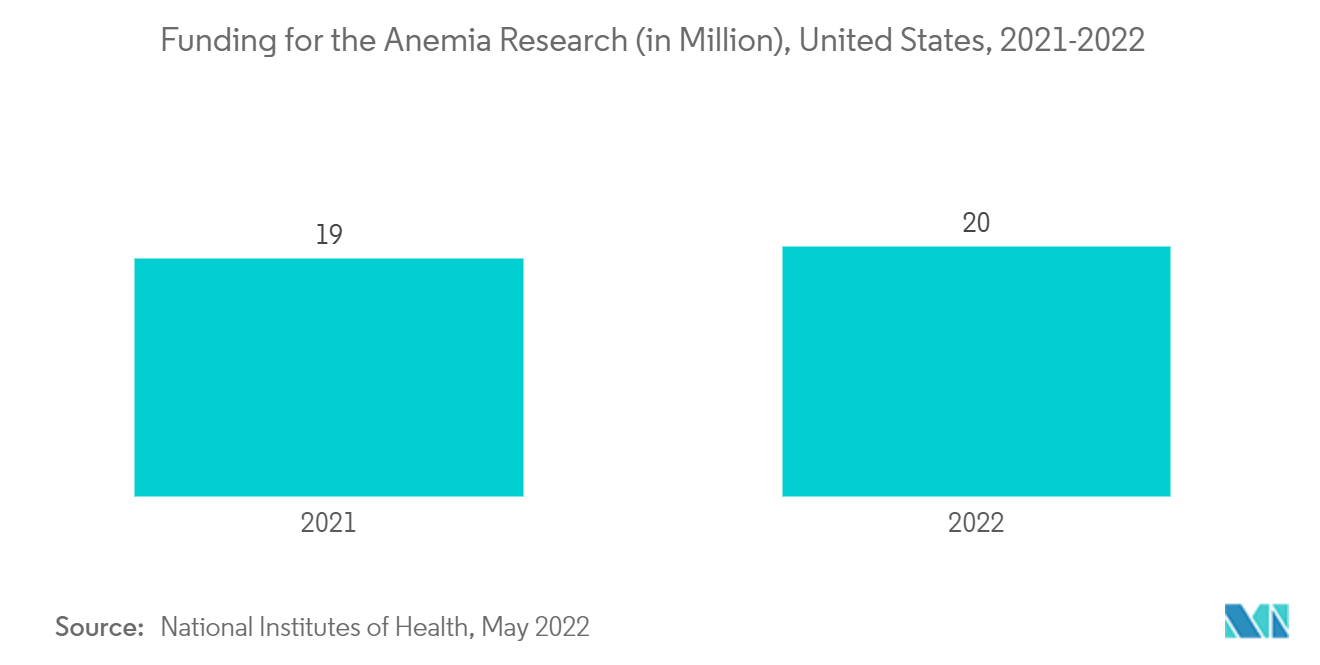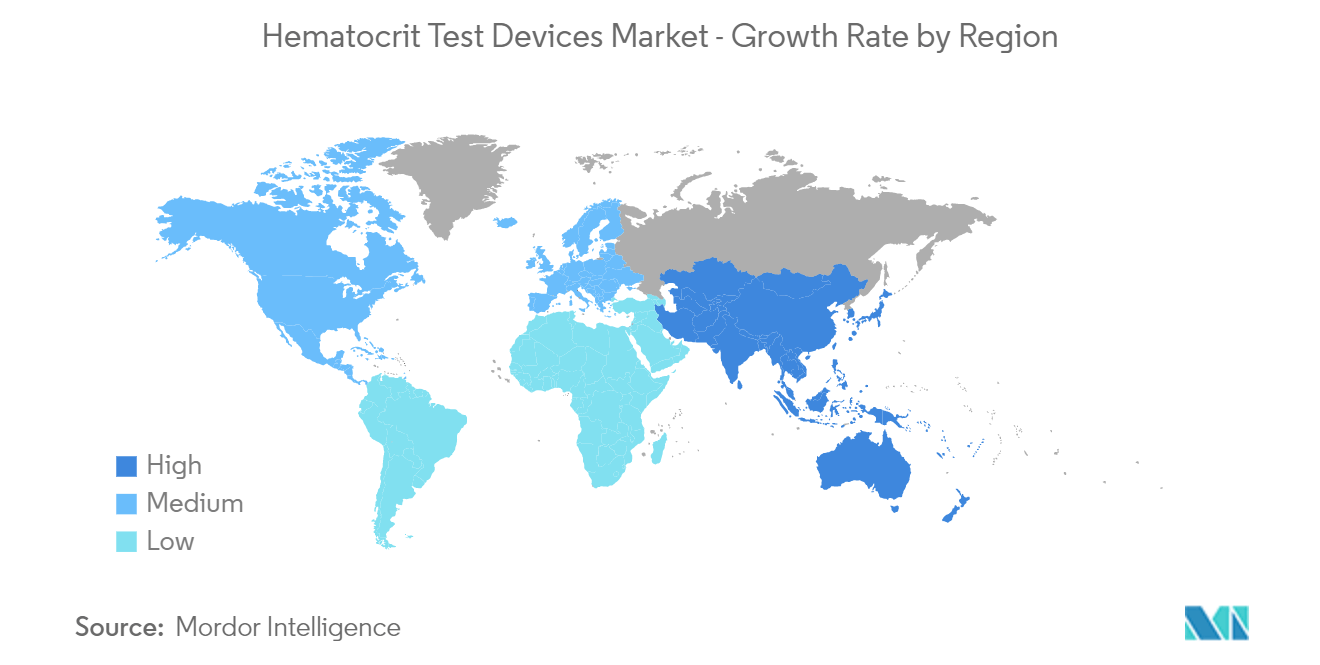Market Trends of Hematocrit Test Devices Industry
Anemia Segment is Expected to Hold a Significant Market Share Over the Forecast Period
A hematocrit test is a simple blood test that measures the percentage of red blood cells. Anemia is defined as a hematocrit level below the normal range, showing insufficient red blood cells. Thus, the hematocrit test has great significance in the diagnosis of anemia.
The rising prevalence of anemia is expected to increase the demand for hematocrit tests, thereby boosting the segment's growth. For instance, according to the fifth round of the National Family Health Survey (NFHS-5) of 2019-21, by the Indian government published in March 2022, at least 67% of children (6-59 months) have anemia, compared to 58.6% in the last survey conducted in 2015-16. Hence, due to the high prevalence of anemia, the demand for hematocrit test devices for anemia is expected to increase over the forecast period.
Government initiatives to increase anemia awareness are expected to increase the demand for hematocrit tests. For instance, in May 2021, the Women and Child Development Department started the 'Anemia Campaign 12' that aims to create awareness about low hemoglobin levels among women and children. Thus, this will likely create demand for hematocrit tests, thereby supporting the market's growth.

North America is Expected to Hold a Significant Share in the Market During the Forecast Period
North America is expected to hold a significant share in the hematocrit test devices market owing to the region's high burden of blood disorders and the rising geriatric population. For instance, according to the research study published in Hematology Journal in August 2022, the prevalence of anemia is rising in the United States. Females are twice as likely to have anemia as males. African Americans are three times more likely than white people to develop anemia. Hence, with the significant burden of different blood disorders, the hematocrit test devices market is expected to grow over the forecast period.
In the North American region, the United States is expected to hold a significant share of the region owing to the presence of robust healthcare infrastructure, the high burden of blood disorders, and the older population. For instance, according to the January 2022 update from the Centers for Disease Control and Prevention (CDC), about 890,000 visits to emergency departments with anemia were recorded in the United States in 2021.
Product launches by the market players are expected to propel the market's growth. For instance, in June 2022, Sysmex America Inc. received FDA clearance for the addition of residual white blood cell counting to its XN-10 Automated Hematology Analyzer with Blood Bank mode.
Therefore, owing to such factors, the North American region is expected to hold a significant share of the market.


